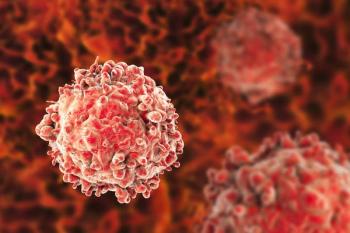
Oncology NEWS International
- Oncology NEWS International Vol 10 No 3
- Volume 10
- Issue 3
Round-up of Cancer-Related Approvals in 2000
ROCKVILLE, Md-The FDA approved 160 medications and medical devices last year, including a number of oncology products. Among the most important cancer medications approved for the first time or for a new indication were:
ROCKVILLE, MdThe FDA approved 160 medications and medical devices last year, including a number of oncology products. Among the most important cancer medications approved for the first time or for a new indication were:
Trisenox (arsenic trioxide) was approved for the treatment of acute pro-myelocytic leukemia (APL) in patients who failed all-trans-retinoic acid and anthracycline-based chemotherapy, or who relapsed after such medication.
Mylotarg (gemtuzumab ozogamicin), a monoclonal antibody, targets the CD33 antigen that appears on about 85% of acute myeloid leukemia (AML) cells. It won approval for use in AML patents age 60 and older who have relapsed for the first time and who are not candidates for standard cytotoxic therapy.
Nolvadex (tamoxifen citrate) was approved for a new indication to reduce the risk of invasive breast cancer for women with preinvasive cancer of the milk ducts.
Pacis (BCG Live) was approved for treating cancer in situ in the absence of associated invasive cancer of the bladder.
Actimmune (interferon gamma-1b) received approval for delaying time to disease progression in malignant osteopetrosis.
Camptosar (irinotecan) gained a new indication as first-line therapy in combination with fluorouracil and leucovorin for metastatic colorectal cancer.
FDA regulators also approved several medical devices for use in cancer patients.
The Optical Biopsy System, a laser procedure operated through an endoscope, enables physicians to distinguish small, harmless growths in the colon from precancerous polyps. It can evaluate growths less than 1 cm in diameter.
The Senographe 2000D, the first digital mammography system to be approved by the FDA, produces images on a solid-state receptor. "Unlike radiographic film, digital images can be electronically stored and transferred, so they can be evaluated by a specialist at a remote location," the agency noted.
The FocalSeal-L Surgical Sealant was approved for closing air leaks in the lungs of patients following the removal of cancerous tumors.
Articles in this issue
almost 25 years ago
First Racial-Ethnic Breast and Cervical Cancer Screening Dataalmost 25 years ago
Mitotic Activity Index IDs High-Risk Node-Negative Breast Canceralmost 25 years ago
Programs Help Women/Physicians Decide on Adjuvant Therapy for Breast Canceralmost 25 years ago
Disclosure Issues in Cancer Gene Testing Worry Doctorsalmost 25 years ago
Functional Assessment of Geriatric Cancer Patients Neededalmost 25 years ago
Mobile Mammography Programs Are Struggling to Survivealmost 25 years ago
Ellence Research Fund Names 11 Grant Recipientsalmost 25 years ago
Hyperfractionated RT Ups Pharynx Cancer Survivalalmost 25 years ago
Internet Creates Virtual Radiology DepartmentNewsletter
Stay up to date on recent advances in the multidisciplinary approach to cancer.
































































































